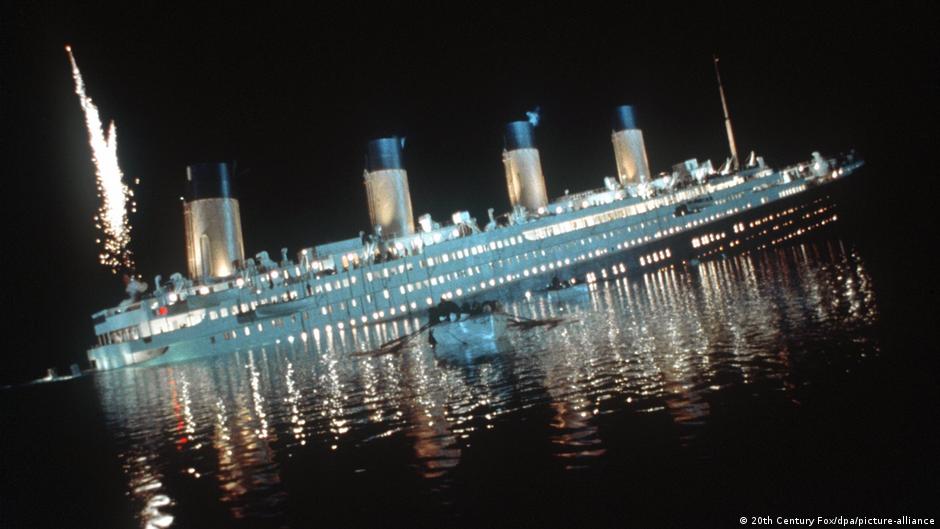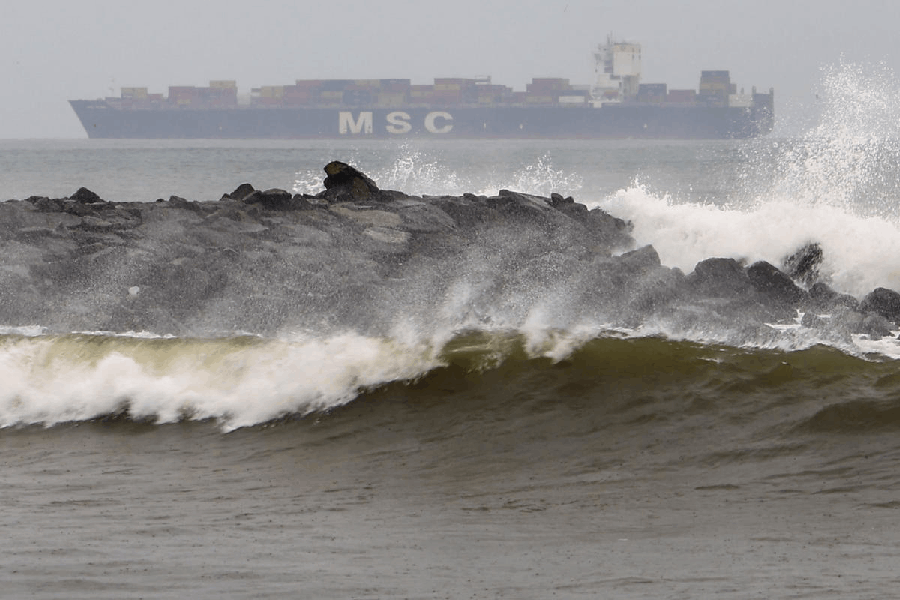The RMS Titanic was supposed to be a triumph of engineering. Built in Belfast, the ship was the largest in the world in its day. In 1912, the luxury liner set out on its maiden voyage from Southampton, England to New York City. People had clamored to reserve places onboard.
The prices of first-class tickets varied, with the cheapest costing 30 pounds, the equivalent of about €4,000 ($4,330) today. Many of the guests could certainly afford it — wealthy guests included real estate mogul and hotel owner John Jacob Astor, one of the richest men in the world at the time, as well as businessman Benjamin Guggenheim and his mistress. They all wanted to make history as the first passengers on the Titanic.
Others saw the crossing as a chance to find a better life in North America. Little did anyone know, the Titanic would never reach its final destination. On the night of April 14, 1912, the steamer hit an iceberg, and the maiden voyage ended in disaster. Many myths and legends have circled around the accident up through today. Here are 10 facts about the Titanic you might have missed.
1. No binoculars on hand
On the fateful night of April 14, sailor Frederick Fleet was on lookout duty. He was an experienced sailor who had been sailing since the age of twelve. It is said to have been bitterly cold in the crow's nest that night when Fleet saw a dark mass in the water — the first spotting of the iceberg — and reported the danger to his superiors. The first officer responded promptly, but it was too late.
Fleet survived the disaster and later stated for the record that he had not had binoculars. The binoculars were in a locked cabinet, and the keys had been left with an officer who was not onboard the ship. Part of the crew had been replaced shortly before the first Atlantic crossing, and this officer was among those replaced. He must have forgotten to leave the key on the ship.
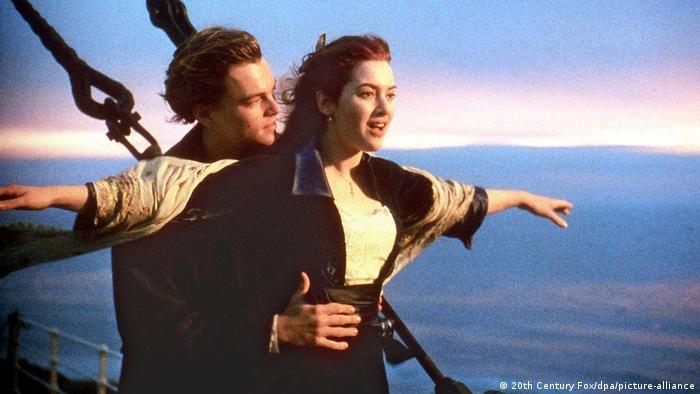
The 1997 movie 'Titanic' has a cult following Deursche Welle
2. The band keeps playing
Once the Titanic hit the iceberg an it was clear the ship would sink, chaos reigned, and the air was filled with fear and the screams of passengers scrambling to board lifeboats. The liner's musicians, however, decided to play on the deck of the luxury liner. For more than two hours after the collision, the band was still trying to calm down the frightened people onboard. All eight musicians lost their lives in the accident. This moving gesture by the band can be seen in director James Cameron's 1997 cult film "Titanic."
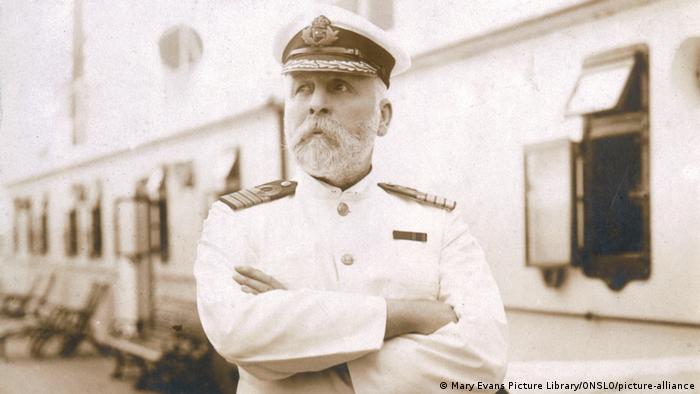
Many of the ship's crew perished, including captain Edward John Smith. Deutsche Welle
3. 'Be British, boys, be British'
None of the engineers on the Titanic survived. Captain Edward John Smith is said to have encouraged his crew with the words, "Be British, boys, be British."
Other men, including from the first class, also preferred to die with honor. Businessman Benjamin Guggenheim is reported to have said, "We've dressed up in our best and are prepared to go down like gentlemen." Real estate mogul John Jacob Astor also is said to have wryly remarked, "I asked for ice, but now this is ridiculous." He helped a young woman and a child emigrant into a lifeboat.
Of the approximately 2,240 passengers, only 700 survived the disaster.
4. Drinking to stay warm
The sea that night had a temperature of around zero degrees celsius (27 degrees Fahrenheit), a temperature in which a person could normally only survive for a maximum of 15 minutes.
Charles Joughin, the chief baker on the Titanic, is one of the most famous survivors of the disaster. Although he was chosen as the captain of one of the lifeboats, he decided to give up his place since there were already sailors on the lifeboat to steer it.
Joughin went down with the sinking ship but drank so much alcohol beforehand that he no longer felt the cold of the water in which he floated. After spending two hours swimming in the water, he was pulled onto an overturned lifeboat and was eventually picked up by a rescue ship.
5. Love on the Titanic
The love story of Rose and Jack featured in James Cameron's "Titanic" is pure fiction. But there were lovers on the Titanic who suffered a tragic end.
One example is the co-owner of the American department store Macy's and his wife: Isidor and Ida Straus. They had spent the winter in Europe and were on their way back home to New York. Both were offered a seat in a lifeboat, but Isidor refused — as long as children and women were still on the sinking ship, he did not want to get on.
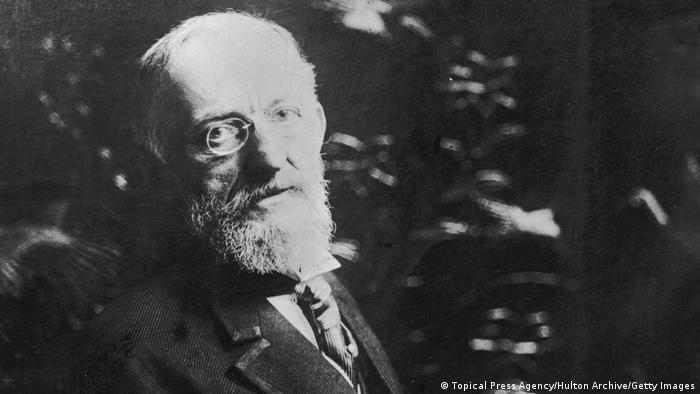
Businessman Isidor Straus gave up his seat on a rescue boat. Deutsche Welle
His wife Ida, in turn, did not want to be rescued without her husband and is reported to have said, "I will not be separated from my husband. As we have lived, so will we die, together." Several plaques commemorate the couple who chose to share death, including one at Macy's department store in New York City.
6. Why weren't there enough lifeboats?
The ship should have had 32 lifeboats, and while the initial designer planned for this, the shipping company was convinced that the liner was safe and that having more lifeboats would just needlessly take up space on the decks. On a ship like this, comfort was of the utmost importance.
The company actually did not violate any safety laws, because according to the regulations of the time, the number of boats was based on the weight of the ship, not on the number of passengers. It was a fatal calculation. With the 16 lifeboats and four folding boats that were onboard, only 700 people could be rescued.
7. Art predicts life
Perhaps before naming the steamer Titanic, the White Star Line shipping company should have read author Morgan Robertson's book "Futility,” published in 1898.
The novel told the story of a large and luxurious ship called the Titan that hits an iceberg while sailing between the US and England — just like the Titanic in real life.
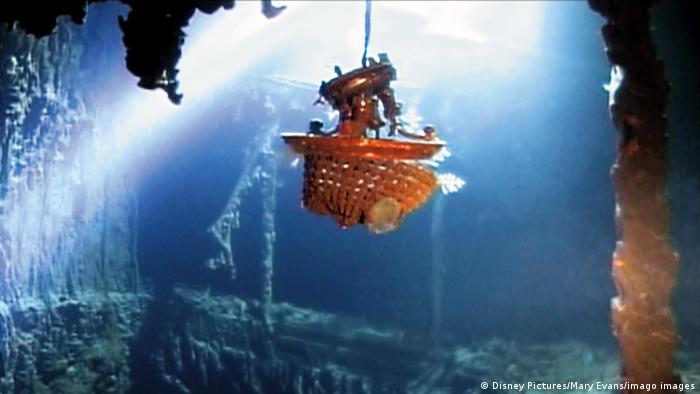
The documentary film 'Ghosts of the Abyss' captured this eerie shot of the wrecked Titanic's chandelier. Deutsche Welle
8. The long search for the shipwreck
Many individuals set out to find the sunken Titanic, but it was not until 73 years after the disaster, in 1985, that underwater archaeologist Robert Ballard succeeded in locating the wreck in the North Atlantic and photographing it for the first time. He financed this endeavor by agreeing to search for the remains of two sunken submarines in a secret US Navy mission. He then had twelve days in which he was allowed to use Navy equipment to find the Titanic.
At a depth of 3,800 meters (12,470 feet), in eternal darkness, he found the wreck of the former luxury liner. The find came just in time, as microbes had already settled onto the shipwreck and begun decomposing the Titanic piece by piece; it will eventually become dust. Scientists suspect that the wreck will be gone by 2030. Yet the legend will certainly remain.
9. Well-known and not so well-known film adaptations
The best-known film adaptation of the Titanic story is probably James Cameron's 1997 box-office hit. The film earned $2.5 billion (€2.3 billion) and is considered one of the most successful films in movie history — it won eleven Oscars.
But there were also other film adaptations. The first was made in 1912, the same year the steamer went down. It was entitled "Saved From the Titanic," and the main role was played by a survivor of the disaster. A Titanic film was also made in Germany during World War II, but the Nazis used this film version as a propaganda tool against the US and the United Kingdom.
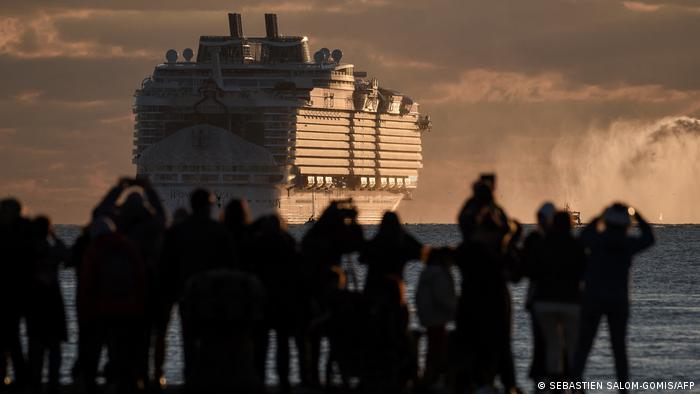
These days, cruise ships are far larger than the Titanic. Deusche Welle

10. Titanic in comparison today
Since 1912, many passenger ships have cruised the Atlantic, and the Titanic has long since been overtaken in size by countless other vessels. The largest cruise ship, to be launched this year, is called Wonder of the Seas. It will have a width of 66 meters (216 feet), compared to the Titanic's 28 meters (92 feet). There is also a clear difference in height: the Wonder of the Seas measures 72.5 meters (238 feet) and the Titanic just 53 meters (173 feet).
This article was translated from German.

